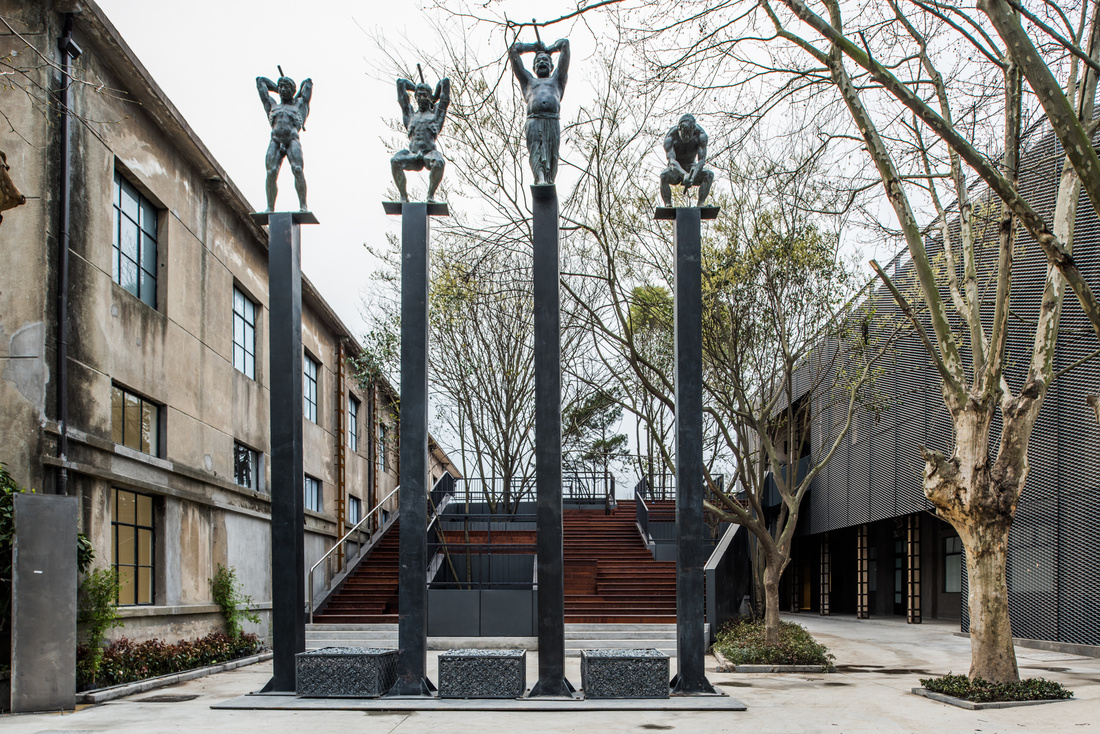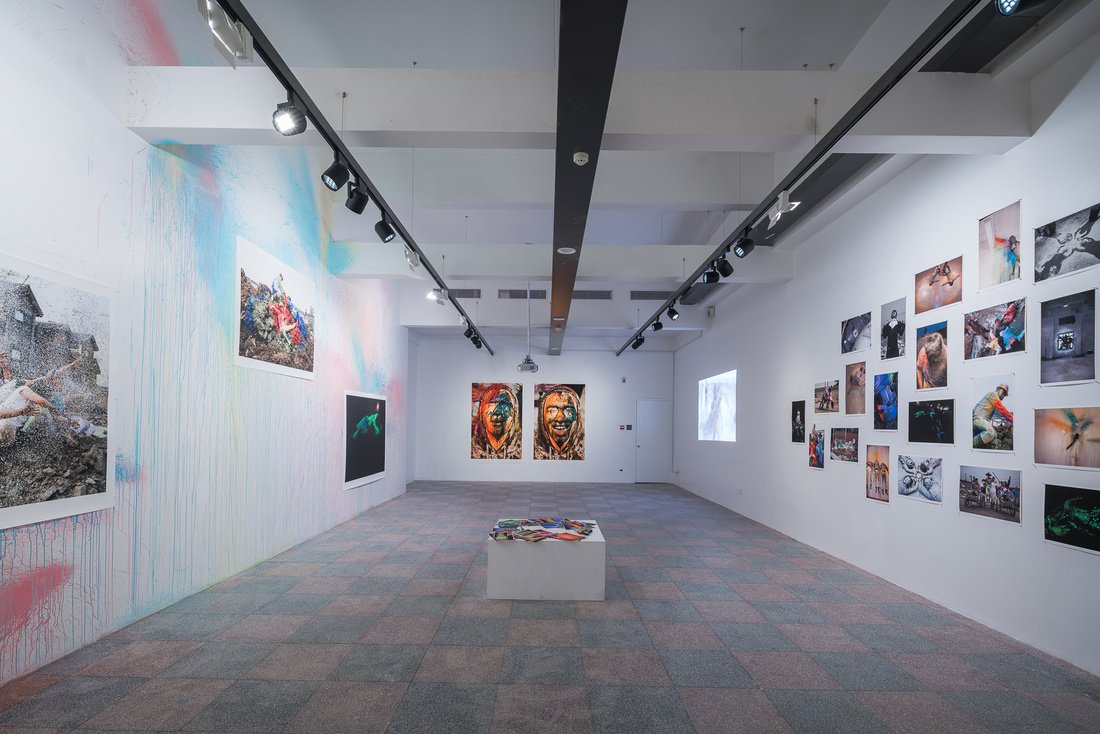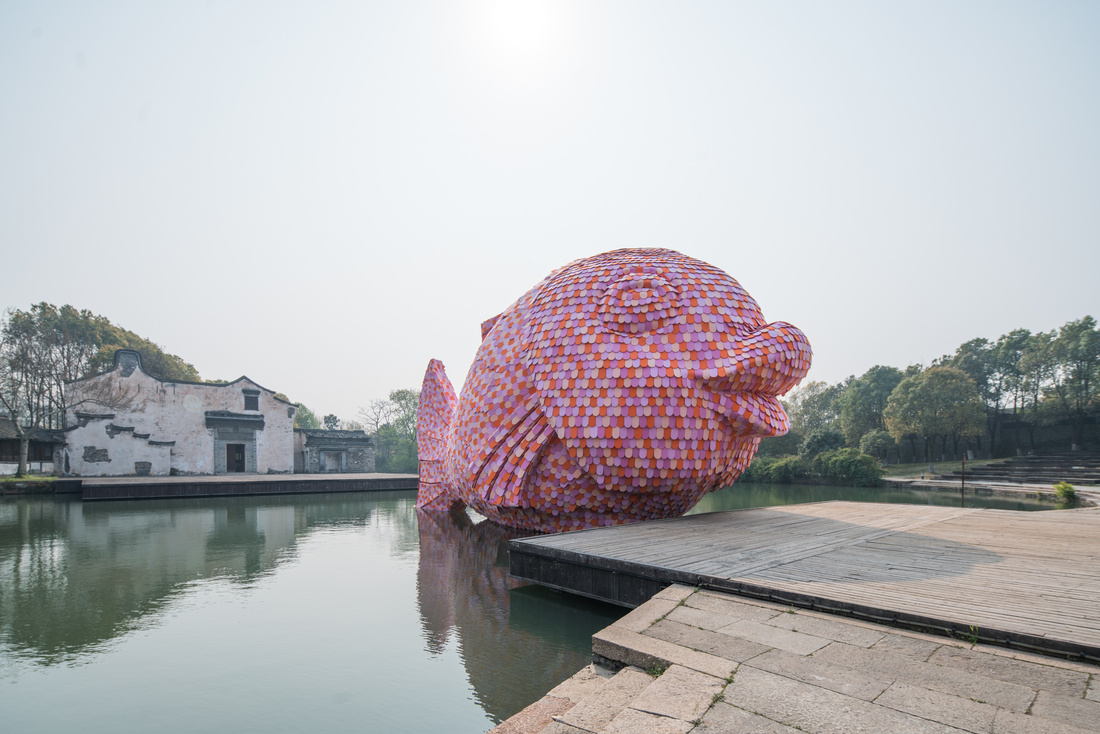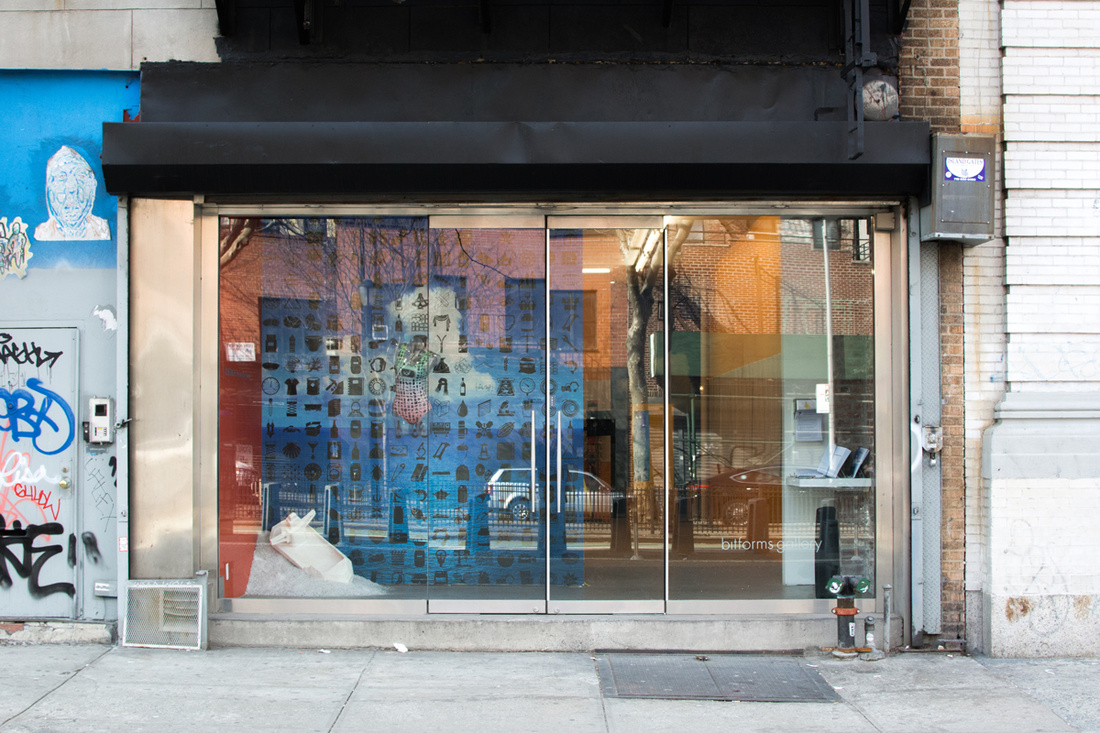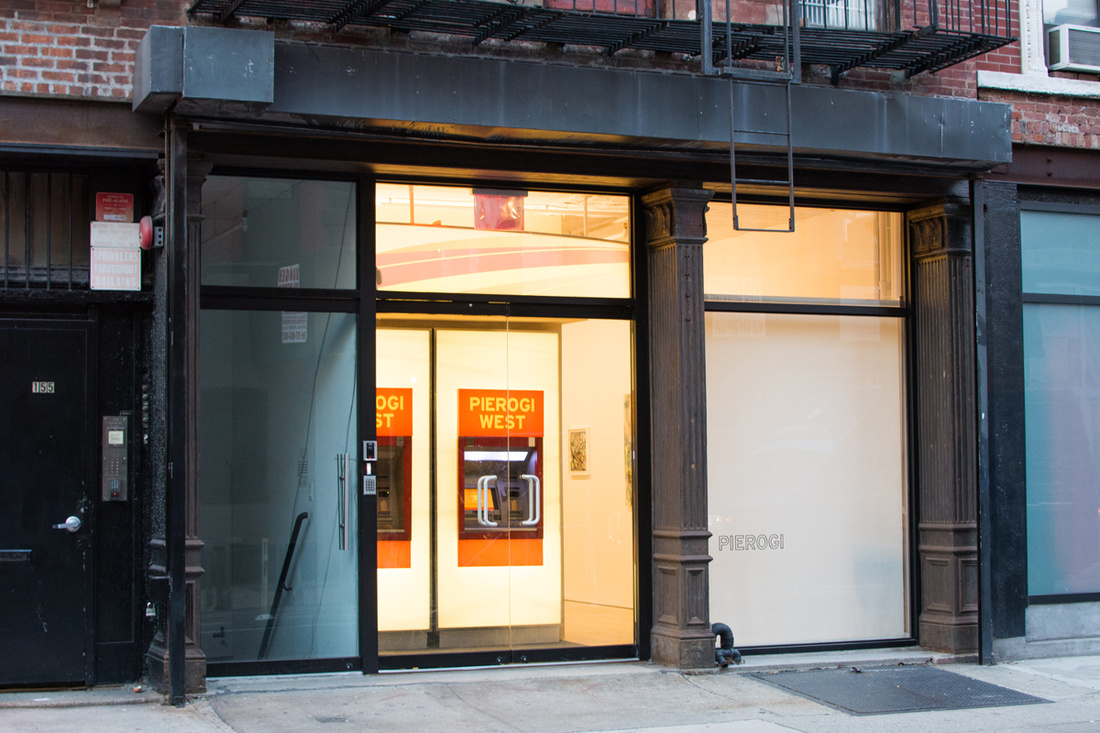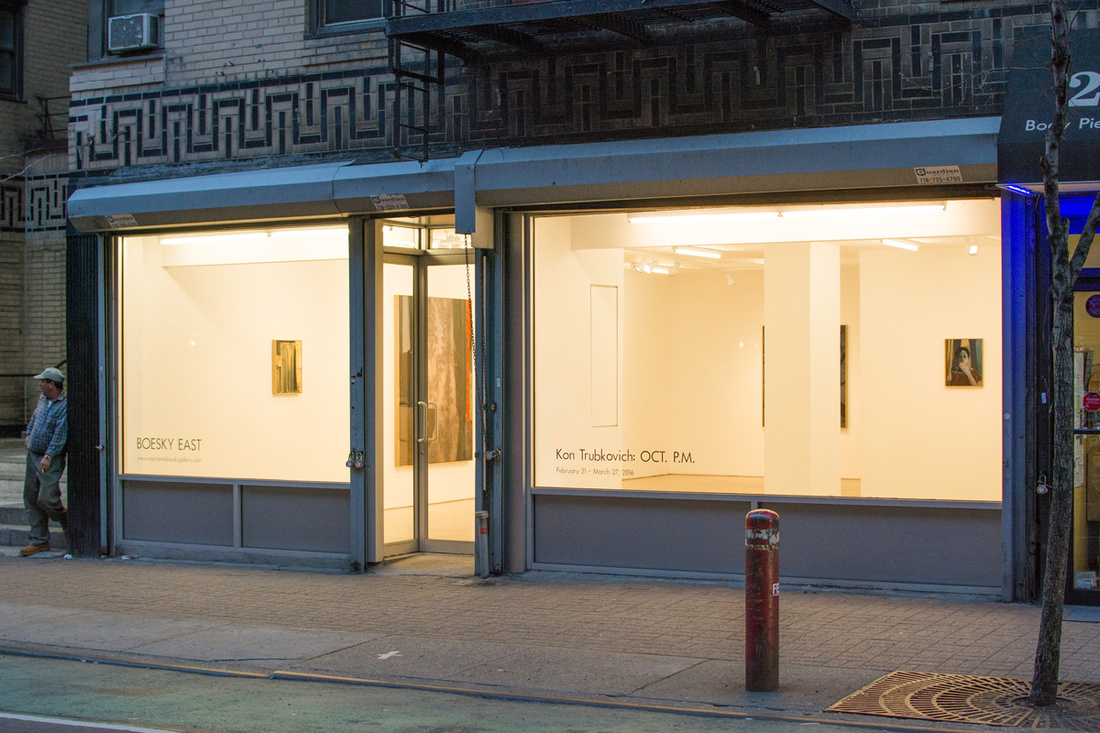
Margaret Harrison, Homeworkers, 1977.
©MARGARET HARRISON/TATE, PURCHASED 2011
In honor of Tate Modern’s survey of British Conceptual art, “Conceptual Art in Britain 1964–1979,” which opened earlier this week, below are excerpts of reviews from the ARTnews
archives. All of the artists discussed are included in show, which runs through August 29.

Richard Long, A Line Made by Walking, 1967.
©RICHARD LONG/DACS, LONDON/TATE, PURCHASED 1976
“Richard Long at Modern Museum”
By April Kingsley
May 1972
Richard Long’s [Modern Museum] seven concentric rectangles of red mud on the floor of a small gallery relate directly (as did his spiraling mud footpaths at the Guggenheim) to the surrounding architectural space. The result resembles something like an Indian sand painting based on a Frank Stella configuration, and does not resonate as sculpture. It does, by virtue of having walked into existence, relate to the other, more conceptual, works in this mini-retrospective. In an odd way, many of these works—collages of juxtaposed statements, maps, diagrams, and photographic documentation—have more sculptural connotations than the mud pieces… As his X’s, spirals and rectangles “walked into” the landscape over the years seem to indicate, it appears that Long wants to defy Picasso’s dictum that “Art is what nature isn’t” by fusing art and nature in a manner much like that of the builders of Stonehenge, though far less permanently. The configurations he imposes on the landscape can’t have that meaningful longevity, but their ephemeral beauty is touching.
“Susan Hiller at Pat Hearn”
By Eleanor Heartney
Summer 1988
Philosophers have long contended that science, far from being an objective account of preexistent phenomena, itself creates phenomena in the process of describing them. This show by British Conceptual artist Susan Hiller employs the format of scientific documentation to explore that issue.
The walls of the gallery were lined with the mounted displays and charts of
Dedicated to the Unknown Artists, which documents, categorizes, and analyzes a set of picture postcards devoted to “Rough Sea” images of the British Isles. As Hiller explains in the exhaustively detailed notes accompanying the piece, the ubiquitous “Rough Sea” postcards views according to various factors, such as whether the image is photographic, painted, hand-colored, or framed and accompanied by a caption, and has developed a system of types of images.

John Hilliard, Sixty Seconds of Light (detail), 1970.
©JOHN HILLIARD/TATE, PURCHASED 1973
“Hamish Fulton at Maureen Paley Interim Art”
By William Feaver
May 2005
For this exhibition, [Hamish] Fulton displayed his usual mix of photographs, inscriptions, and résumés of locations seen and journeys taken. Like Richard Long, with whom he is inevitably compared, Fulton likes to convey the impression that his work draws together the personal account, the desire to accomplish tasks, and the perspectives of terrain and cosmos.
So in huge letters, white on gray, running the length of a gallery wall, he spells out “water,” adding the information that in a period of two months, three years ago, he walked from Bilbao, in northern Spain, to Rotterdam, on the North Sea, via several major European water sources, such as the Rhine.
…
His foraging and explorations have accumulated an extraordinary dossier of well-edited memorials of wanderlust.

Roelof Louw, Soul City (Pyramid of Oranges), 1967.
©ROELOF LOUW/COURTESY ASPEN ART MUSEUM, 2015/TATE, PRESENTED BY TATE PATRONS, 2013
“David Tremlett at Gering & López”
By Barbara Pollack
December 2008
British artist David Tremlett is best known for his wall drawings—site-specific images that wear away with time or eventually get painted over. Both ephemeral and memorable, these images are intended to encapsulate the artist’s equally fleeting experiences as he has traveled around the world. The abstract compositions function surprisingly well as picture postcards, conveying the tone and color of various locations without being too specific.
…
Tremlett risks becoming merely a tourist in his world of his own creation, letting sensations skitter along the surface, and not delving beneath. But one work,
Kolkata (2008), is deeply disturbing. For this “snapshot” of Calcutta, the artist smeared the wall with a thick rectangle of black grease applied like ripples of water and finished it with a border of vertical stripes along the bottom edge. It was simultaneously beautiful and gross, alluring and repellent—a minimalist work with maximal impact.
Kolkata is as difficult to forget as it must have been to remove from the gallery’s wall.
“Victor Burgin at Galerie Thomas Schulte”
By Alicia Reuter
September 2012
In this thought-provoking retrospective of three decades’ worth of film, photography, and text-based work, British artist Victor Burgin, one of the founding fathers of Conceptualism, asserted his intellectual might, as well as a surprising ability to transform the mundane into rich, sensual imagery.
The show opened with Burgin’s first juxtaposition of text and image,
Performance/Narrative (1971), which consists of 16 framed photographs and one framed text. The black-and-white gelatin prints depict a small desk, a chair, a lamp in a mysterious office, while the text describes various obscure narrative possibilities.
…
In the last room, eight diptychs titled
Zoo 78 (1978) paired unsettling images, often of women in various states of undress, with mundane shots of the courtyards, street signs, room interiors, and buildings that surround the Berlin Zoo. Short texts from Russian critic Viktor Shklovsky and the Marquis de Sade created a sybaritic element, suggesting Burgin’s interest in acts of voyeurism.
“Michael Craig-Martin, the Godfather of British Conceptual Art, Comes to Dallas”
By Nana Asfour
April 2015
“Everybody was raising everybody else’s game,” Craig-Martin said of that time. “There was a chemistry that was very unusual. I knew it was special. I can honestly say that I did let the thought pass through my head that this could be the next generation of British artists, but it never occurred to me that they would achieve the kind of success that they did.” Craig-Martin has kept in touch with nearly all of them. “The amazing thing is that there was a point a couple of years ago where they were all the age that I was when I taught them,” he said, laughing.
While Craig-Martin is proud of his association with the YBAs and is happy to discuss his relationship with them, then and now (“I think I was quite an effective teacher,” he said without reservation), he hasn’t rested on the laurels of this period of his life. Rather, since he made his iconic conceptual work
An Oak Tree (1973)—a glass of water installed on a shelf and accompanied by text that makes a case that the glass is, in fact, an oak tree—he has been forging ahead in his own work. He has built an impressive art career for himself, and is now represented by Gagosian, one of the top galleries in the world. Unlike many of his students, his success has been rather slow coming, though he isn’t complaining. “One of the things I realize now is that the hardest thing about being an artist is being able to sustain a career over a lifetime, and not everybody is able to do that.” If anything, this year is proof that he is.
















